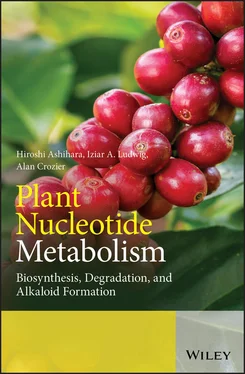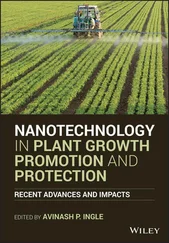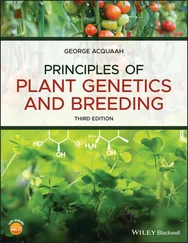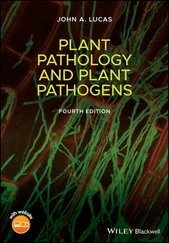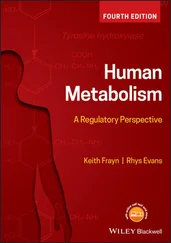1 Cover
2 Preface Preface Almost all organisms produce nucleobases, nucleosides and nucleotides of purines and pyrimidines. There have been a number of books on nucleotide metabolism in microorganisms and humans. However, this is the first to focus on plants which exhibit important differences to other organisms in key areas of nucleotide metabolism and function. The book covers the metabolism of purine, pyrimidine and pyridine nucleotides and nucleotide alkaloids in higher plants and points out differences from that occurring in other organisms. Likewise, differences in the salvage pathways and diversity of interconversions in plants, fungi and bacteria are highlighted. Various physiological aspects of these processes are covered along with their involvement in the control of plant growth and development. Among the topics covered are the purine alkaloids caffeine, theobromine and their metabolites which, in species including coffee, tea and cocoa, accumulate in quantity. There is also discussion of the function of purine alkaloids and the potential allelopathic role of caffeine. Studies, some making use of genetically-modified plants, have indicated that caffeine can play a role in a variety of plant defence strategies. Other investigations have provided evidence that trigonelline, found principally in coffee and legumes, has a role in resistance to salt stress and can act as a natural pesticide to reduce insect infestations. Finally, the book explores the absorption, metabolism and potential impact on health of dietary caffeine, theobromine and trigonelline The book provides comprehensive information on nucleotide structures and metabolic pathways and is a unique resource on a diversity of topics and as such is essential reading for students, researchers, and lecturers in plant biochemistry, physiology, chemistry, agricultural sciences, nutrition and the associated applied fields of research. We owe special thanks Professors Tatsuhito Fujimura, Claudio Stasolla and Takao Yokota for their help with some of the figures and advice on genes encoding key enzymes and chemical structures for the book. Hiroshi Ashihara Iziar A. Ludwig Alan Crozier
3 Part I: General Aspects of Nucleotide Metabolism Part I General Aspects of Nucleotide Metabolism
1 Structures of Nucleotide-Related Compounds 1 Structures of Nucleotide-Related Compounds 1.1 Introduction The chemistry of purine, pyrimidine, and pyridine nucleobases, nucleosides, and nucleotides constitute one of the oldest topics in biochemistry. In this chapter, the nomenclature and structures of nucleotides are briefly described.
1.1 Introduction 1.2 Nomenclature and Abbreviations of Nucleotide-Related Compounds 1.3 Chemical Structures of Nucleotide-Related Compounds 1.4 Summary References 2 Occurrence of Nucleotides and Related Metabolites in Plants2.1 Purines and Pyrimidines 2.2 Pyridine Nucleotides 2.3 Concentration of Cytokinins 2.4 Alkaloids Derived from Nucleotides 2.5 Summary References 3 General Aspects of Nucleotide Biosynthesis and Interconversions 3.1 Introduction 3.2 De Novo Biosynthesis of Ribonucleoside Monophosphates 3.3 Interconversion of Nucleoside Monophosphates, Nucleoside Diphosphates, and Triphosphates 3.4 Conversion of Nucleoside Diphosphates to Nucleoside Triphosphates 3.5 Biosynthesis of Deoxyribonucleotides 3.6 Nucleic Acid Biosynthesis 3.7 Supply of 5-Phosphoribosyl-1-Pyrophosphate 3.8 Supply of Amino Acids for Nucleotide Biosynthesis 3.9 Nitrogen Metabolism and Amino Acid Biosynthesis in Plants 3.10 Summary References
4 Part II: Purine Nucleotide Metabolism 4 Purine Nucleotide Biosynthesis De Novo 4.1 Introduction 4.2 Reactions and Enzymes 4.3 Summary References 5 Salvage Pathways of Purine Nucleotide Biosynthesis5.1 Introduction 5.2 Characteristics of Purine Salvage in Plants 5.3 Properties of Purine Phosphoribosyltransferases 5.4 Properties of Nucleoside Kinases 5.5 Properties of Nucleoside Phosphotransferase 5.6 Role of Purine Salvage in Plants 5.7 Summary References 6 Interconversion of Purine Nucleotides6.1 Introduction 6.2 Deamination Reactions 6.3 Dephosphorylation Reactions 6.4 Glycosidic Bond Cleavage Reactions 6.5 In Situ Metabolism of 14C-Labelled Purine Nucleotides 6.6 In Situ Metabolism of Purine Nucleosides and Bases 6.7 Summary References 7 Degradation of Purine Nucleotides7.1 Introduction 7.2 ( S )-Allantoin Biosynthesis from Xanthine 7.3 Catabolism of ( S )-Allantoin 7.4 Purine Nucleotide Catabolism in Plants 7.5 Accumulation and Utilization of Ureides in Plants 7.6 Summary References
5 Part III: Pyrimidine Nucleotide Metabolism 8 Pyrimidine Nucleotide Biosynthesis De Novo 8.1 Introduction 8.2 Reactions and Enzymes of the De Novo Biosynthesis 8.3 Control Mechanism of De Novo Pyrimidine Ribonucleotide Biosynthesis 8.4 Biosynthesis of Thymidine Nucleotide 8.5 Summary References 9 Salvage Pathways of Pyrimidine Nucleotide Biosynthesis9.1 Introduction 9.2 Characteristics of Pyrimidine Salvage in Plants 9.3 Enzymes of Pyrimidine Salvage 9.4 Role of Pyrimidine Salvage in Plants 9.5 Summary References 10 Interconversion of Pyrimidine Nucleotides10.1 Introduction 10.2 Deaminase Reactions 10.3 Nucleosidase and Phosphorylase Reactions 10.4 In Situ Metabolism of 14C-Labelled Pyrimidines 10.5 Summary References 11 Degradation of Pyrimidine Nucleotides11.1 Introduction 11.2 Enzymes Involved in the Degradation Routes of Pyrimidines 11.3 The Metabolic Fate of Uracil and Thymine 11.4 Summary References
6 Part IV: Physiological Aspects of Nucleotide Metabolism 12 Growth and Development 12.1 Introduction 12.2 Embryo Maturation 12.3 Germination 12.4 Organogenesis 12.5 Breaking Bud Dormancy 12.6 Fruit Ripening 12.7 Storage Organ Development and Sprouting 12.8 Suspension-Cultured Cells 12.9 Molecular Studies 12.10 Summary References 13 Environmental Factors and Nucleotide Metabolism13.1 Introduction 13.2 Effect of Phosphate on Nucleotide Metabolism 13.3 Effect of Salts on Nucleotide Metabolism 13.4 Effect of Water Stress 13.5 Effect of Wound Stress 13.6 Effect of Iron Deficiency 13.7 Effect of Light 13.8 Summary References
7 Part V: Purine Alkaloids 14 Occurrence of Purine Alkaloids14.1 Introduction 14.2 Chemical Structure of Purine Alkaloids 14.3 Occurrence of Purine Alkaloids in Plants 14.4 Summary References 15 Biosynthesis of Purine Alkaloids15.1 Introduction 15.2 A Brief History of Caffeine Biosynthesis Research 15.3 Caffeine Biosynthesis Pathway 15.4 Genes and Proteins of Caffeine Synthase Family 15.5 Xanthosine Biosynthesis from Purine Nucleotides 15.6 Summary References 16 Physiological and Ecological Aspects of Purine Alkaloid Biosynthesis16.1 Introduction 16.2 Physiology of Caffeine Biosynthesis 16.3 Subcellular Localization of Caffeine Biosynthesis 16.4 Regulation of Caffeine Biosynthesis 16.5 Ecological Roles of Caffeine 16.6 Summary References 17 Metabolism of Purine Alkaloids and Biotechnology17.1 Introduction 17.2 Metabolism of Purine Alkaloids 17.3 Diversity of Purine Alkaloid Metabolism in Plants 17.4 Biotechnology of Purine Alkaloids 17.5 Caffeine-Producing Transgenic Plants 17.6 Summary References
8 Part VI: Pyridine Nucleotide Metabolism 18 Pyridine (Nicotinamide Adenine) Nucleotide Biosynthesis De Novo 18.1 Introduction 18.2 Two Distinct Pathways of De Novo Nicotinate Mononucleotide Biosynthesis 18.3 The Outline of the De Novo Pathway of NAD Biosynthesis in Plants 18.4 Enzymes Involved in De Novo NAD Synthesis in Plants 18.5 Summary References 19 Pyridine Nucleotide Cycle19.1 Introduction 19.2 Pyridine Nucleotide Cycle 19.3 Catabolism of NAD 19.4 Enzymes Involved in NAD Catabolism 19.5 Salvage of Nicotinamide and Nicotinate 19.6 Summary References
9 Part VII: Pyridine Alkaloids 20 Occurrence and Biosynthesis of Pyridine Alkaloids20.1 Introduction 20.2 Occurrence of Pyridine Alkaloids 20.3 Biosynthesis of Pyridine Alkaloids 20.4 Summary References 21 Physiological Aspect and Biotechnology of Trigonelline21.1 Introduction 21.2 Physiological Aspect of Trigonelline Biosynthesis 21.3 Physiological Aspects of Nicotinate N-Glucoside Biosynthesis 21.4 The Role of Trigonelline in Plants 21.5 Biotechnology of Trigonelline 21.6 Summary References
Читать дальше
